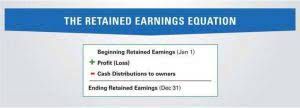
How do you ensure that costs are kept in check and that the factory operates efficiently? It’s a crucial concept in management accounting that helps businesses control costs and plan for the future. But what exactly are the objectives of implementing standard costing? Standard costs is considered as as a reliable basis for financial forecasting and budgeting, ensuring more accurate and realistic financial planning. It helps in the precision of budgeting processes and helps in overlapping of financial plans with firm’s goals.

Focus on Efficiency Improvement
Without this closing of the loop, variance analysis becomes an academic exercise rather than a management tool. Document your standards comprehensively with standard cost sheets detailing the components of each product’s cost. This transparency prevents the “black box” syndrome where nobody trusts the numbers because they don’t understand where they came from. Let’s be honest — standard costing isn’t perfect for every situation. Here are the key drawbacks I’ve observed over my career that you should weigh against the benefits.
Pre-Requisite # 2. Judicious Setting of Standards:

As a consequence, the information in the reports may be so stale that it is almost useless. Timely, frequent reports that are approximately correct are better than infrequent reports that are very precise but out of date by the time they are released. Some companies are now reporting variances and other key operating data daily or even more frequently. Besides that, if managers are insensitive and use variance reports as a club, morale may suffer. Employees should receive positive reinforcement for work well done. Management by exception, by its nature, tends to focus on the negative.

Variance calculation methods

Further, it is also useful in practical management functions, i.e. planning and controlling. But the real payoff comes from improved decision-making when everyone in the organization has access to timely, accurate cost information. From daily operational choices to strategic initiatives, solid cost data provides the foundation for continuous improvement and competitive advantage in today’s manufacturing landscape. This real-time tracking eliminates most manual data entry errors while providing immediate visibility into performance.
Standard Costing: Meaning and Objectives Cost Accounting

Whenever you have standard costing system set goals to achieve, these goals could also be called standards. For instance, if you have a goal of saving 10% of your gross income in order to save up $1 million by the time you retire, the 10% goal is a standard. Periodically, you should measure your actual performance against your standards and analyze the differences to see how close you are to your goal. Similarly, in business, management sets goals, like standard costs, and compares actual costs with these goals to identify possible problems and ultimately improve the bottom line. The advantages of standard costing include improving cost control. It is also beneficial for helping management plan and makes decisions.
- There is a greater practicability of setting standards for a continuous flow of like units than for unique job orders.
- The inflationary tendency in the economy will cause fall in purchasing power of money thereby affects the accounting for real value.
- It is a system or technique of cost accounting which can be used in conjunction with process, job or operating costing without any difficulty, whatsoever.
- The standard cost of materials will be decided in consultation with the purchase department.
- Standard costing simplifies this by valuating inventory consistently and flagging variances for investigation later.
- A production department that is focused on receiving immediate feedback about problems so that they can correct them quickly will be disappointed.
Standard costing gives you solid ground to stand on when building budgets. Instead of guessing what things might cost next quarter, you’ve got predetermined figures for materials, labor, and overhead that serve as reliable building blocks for financial planning. Target costing starts with the market price, subtracts the desired profit, and works backward to determine the maximum allowable cost. It’s inherently market-driven, while standard costing focuses more on internal efficiency. ABC offers surgical precision for companies making diverse products with complex overhead structures, but it’s like using a micrometer when sometimes a tape Bookkeeping for Veterinarians measure will do.
- In a business organization where only single product is manufactured, produced or dealt, it is simple to identify costs with that single product.
- (a) Deciding how to incorporate inflation into planned unit costs.
- Cost accounting refers to the computation of a company’s overall expenditure.
- Standard costing is a technique which helps management to control costs and business operations.
- (b) Standard costing is usually confirmed to organizations whose processes or jobs are repetitive.
- Therefore, the production will be able to maximize their capacity which almost impossible to happen in real life.
- Variance reporting is a mechanism to provide feedback to managers on variances from target results.
Study of the technical and operational aspects of the manufacturing processes and methods etc. Review of existing costing system, cost records and forms in use. Based on the factors as stated above, the production and cost standards are to be set up.
- Standard costing is introduced primarily to ascertain the efficiency of cost performance.
- How do you ensure that costs are kept in check and that the factory operates efficiently?
- This approach is particularly useful in firms where production and costs are a marked portion of total costs, and efficiency gains can be achieved through cost reduction.
- In case there is any change in price or manufacturing condition, the standards are also revised.
- The deviation between standard cost and actual cost cannot be used as a yardstick for measuring efficiency.
Resource Intensive Setup and Maintenance
The best systems let you drill down from high-level summaries into the underlying transactions when questions arise. This ability to follow the cost trail from summary to source transforms accounting from historical scorekeeping into proactive management. Make variance review a regular part of management meetings, with clear Online Accounting accountability for investigation and corrective action.

